It has been my observation that virtually every expatriate with access to public media eventually writes something along the lines of “Ten things about (country X) you need to know before you go” or “Ten things about (the natives of country X) you need to know before you go.” I totally understand the impulse. I mean how much fun is it to reduce an entire nation of people to a stereotype? How much fun is it to make blanket generalizations from the pedestal upon which tourists (American tourists at least) tend to place themselves when abroad? So much fun. Now it’s my turn!
TEN THINGS TO KNOW ABOUT ITALIANS
1. They HATE to be next in line. Queues in Italy reflect an insane need to be done with whatever one is doing. Instead of quietly standing behind the person who is actually first, they all stand side by side, creating confusion as to who is really first. Heaven forbid if the clerk calls on the wrong person to come forward. When that happens, everyone starts yelling at the clerk and each other (see #4). If the queue is forced into vertical formation by space or other considerations, Italians spend the entire time massively invading your personal space, trying to sneak in front of you or just stepping in front of you, pretending they never saw you were there. I suspect this is why so many banks and supermarket deli counters now use the take-a number-approach. The deep-seated queue aversion is particularly annoying at traffic lights, where the microsecond the light turns green everyone starts honking their heads off. The Italian obsession with getting there first seems very counterintuitive in a country that is supposed to epitomize the Mediterranean penchant for chillaxin’.
2. They love milling around and getting in the way. Even when Italians are not deliberately trying to jump the queue, they’re in the way. Every conversation in the out-of-doors — no matter how lengthy or how many people are involved — has to take place either in the entrance of the shop you are trying to enter or in the middle of the sidewalk you are trying to traverse. Every one. I do not know why this is.
3. Italian teenagers are very polite. That doesn’t mean they are not as loud and obnoxious as teenagers anywhere else. They are. I live across the street from Villa Pamphilli, Rome’s largest park. There is a water fountain right by the entrance and, in the summer, every day the dog and I have to run the gauntlet of 20 or so teenagers filling up water balloons and throwing them at each other while the girls run around squealing and the boys strut around with their little hairless chests on show. If their mothers knew about this they would totally freak out (see #5). Italian teenagers do a lot of screaming on buses. Singing on buses is another favorite activity. But they always open the door for their elders and give up their seat on the bus on which they are screaming or singing. It’s Italian family values or something.
4. They loooove the drama. It’s no coincidence that Italians invented opera. Pretty much any everyday experience can launch an ear-splitting aria. Here’s an example. The park across the street features exactly two (2) picnic tables, both of which are in the dog area. For this reason, picnics abound in and around the (albeit badly-signposted) dog area as do, obviously, picnic-loving dogs, one of whom — I’m not naming any names but it rhymes with Gorgon — believes the picnic table to be his own private throne. In the summer, this happens every day: some dog or other goes nosing around the picnics in the dog area. The picnickers yell at the dog owners, who politely point out that dogs are allowed to be off-leash here. The picnickers, not caring, yell some more at which point the dog owners yell back. This goes on for a while until everyone’s day is ruined.
But it takes a lot less than a picnic-sniffing dog to set off a good old-fashioned opera. I once saw a car driver curse out a woman on crutches for taking too long to cross the street. He wasn’t trying to be mean. He was just in a hurry (see #1). All of this yelling may explain the obsession of Italians with their livers — if an ailment isn’t being ascribed to a colpo d’aria (see #5), it’s usually the fault of a mal di fegato. For an Italian, the liver is where all your anger is stored and it’ll hurt if you get angry.

Gorgon surveys his realm.
5. They have an extreme fear of drafts. Tell an Italian that you have a headache, sore throat, stiff neck or pretty much any ailment and they’ll explain that it’s the fault of a blast of air or colpo d’aria. During the winter (meaning from November to May, no matter the actual air temperature), they wear puffy coats and wooly undershirts (maglia di salute or shirt of health) and wrap scarves around their necks. In the summer, they stay away from air conditioning, no matter how blisteringly hot it is outside. If you are lucky enough to find a restaurant with air conditioning, some group will inevitably come in and ask for it to be turned off (for their health). No one but a tourist would dream of opening a window on a train.

I’m not sure if it has anything to do with digestion, but if an Italian goes swimming less than three hours after they have eaten, they will die.
Being sweaty or getting wet only worsens the effect of the colpo d’aria, which is why Italian mothers wait nervously by the edge of the pool, waiting to swaddle little Guido in a towel the second he emerges from the water. It’s also why total strangers yell at you if you go outside with a wet head or walk around barefoot (even inside) and why Italians whip out their trusty umbrellas the instant there’s a drop of rain.
6. They assume that they won’t understand you. I’ve lived in Italy a long time and my Italian is pretty fluent, if riddled with grammatical errors. I certainly speak the language well enough to be understood, even over the phone where I don’t have the added advantage of being able to wave my hands around and point to things. But my accent totally gives me away and, because so few tourists speak Italian, the person I am speaking to assumes that I don’t (EVEN THOUGH I’M BLOODY WELL SPEAKING IT) and that they won’t be able to understand me. At that point, they either stammer out a few words in English or run away. In fairness, I should point out that my Italian friends and acquaintances do not do this at all. They are super happy that I am are trying to speak their language and do their best to understand me.
7. They are every bit as bad on the road as you’ve heard. I don’t think that Italians are inherently bad drivers. They are just always in a hurry and hate to be next in line (see #1), which makes them do crazy reckless things like run red lights and make left turns from the right hand lane while going 80 km/hr. It’s a wonder that they are not constantly crashing and dying but it does explain why every single Italian car has at least one dent in it. Oh, and they also quadruple park and drive and park on the sidewalks.
8. They are obsessed with their digestion. For an Italian, the notion of digestion relates specifically to the process that occurs after a meal when the stomach content settles. It is deeply influenced the combination of foods, when they were eaten and at what temperature. So cappuccino is off limits after 10 am because milk supposedly inhibits digestion. Icy liquids are also bad for digestion and may even cause the dreaded congestione – an abdominal cramp – that will apparently kill you. Salad comes at the end of the meal because it helps you digest. An Italian host will typically offer a digestivo at the end of your meal. A thimble of this typically bitter mix of herbs, roots, plants, spices and alcohol is supposed to hurry along the 3-5 courses you just consumed. If that doesn’t work, there’s always Brioschi, a digestive aid like Alka-Seltzer, which can be found in every Italian kitchen.

Eat your salad after the meal to help you digest.
9. They care a lot about appearances (yours and their own). You can always tell the tourists, slobbing around in their shorts and flip-flops, baggy pants halfway down their backsides, baseball cap a la Luke Danes. For an Italian to dress like this would be to dishonor la bella figura. The way you dress and carry yourself indicates your social status, your background and your education level. An Italian may not have a lot of money to spend on clothes but the clothes they have will be fashionable, of good quality, clean and well-pressed (even if they have to wear the same thing every day). Anything less and they will be judged as a lowlife by all they meet. And so will you.

Looking good is very important.
10. They appreciate food and they know where it comes from. I know. Duh. It’s not exactly a secret that Italians are into food. But the second part of that sentence is actually more interesting (and important) than the first. Most cities around the world are totally delinked from the rural roots of agriculture. For most people, food comes from supermarkets. This is only going to get worse with runaway urbanization — by 2020, an average of 70% of all people will live in cities. Urban growth is particularly affecting developing countries, where 50 years ago most people lived on farms. Losing our ties to the countryside has all sorts of implications, such as the demise of the smallholder farmer, loss of food traditions, over-dependence on highly processed, fatty processed foods with delightful spin-offs like obesity, malnutrition and related problems like cardiovascular disease, cancer and type 2 diabetes. This is happening all over the world, the Western Foodie’s love for the farmers’ market notwithstanding.

Rome and many other Italian cities have a closer connection to the origins of its food than do many developing countries where agriculture remains the most important economic sector.
But it is happening less quickly in Italy. In Rome, at any rate, there is almost a continuum between city and country. Drive a half hour in any direction and you are deep in agricultural country. And there are agricultural pockets all through the city. I used to live in an apartment in central Rome that backed up onto an archeological site that the government ran out of money to dig. So farmers came in and grazed their sheep there. Villa Pamphili is dotted with blackberry bushes and fig, lemon and orange trees and there are always oldies out there gathering wild greens and mushrooms in plastic shopping bags. Supermarkets only became a thing about a decade ago and there are still tons of fresh fruit and vegetable shops, about eight in my immediate neighborhood alone, not to mention a big farmers’ market up the road. I also count four butchers within a five-minute walk.
Are things changing here? Of course. There are fast food places everywhere (although quite a few MacDonalds have closed down in the past few years), supermarkets are supplanting a lot of the mom and pop groceries of yore and there are a lot more microwaveable options than there were five years ago. But most Italians still believe in the importance of a regular home-cooked family meal based on fresh ingredients. And as long as they understand and connect to the roots of the food they eat, that’s not likely to change completely.
 I’ve been meaning to write about this place for a while. I first stumbled on it when I went to pick up my Italian identity card at the police station. I often time such errands to take place during the luncheon hour and if there happens to be an interesting restaurant nearby and I happen to pop inside, what’s the harm in that? Tutto qua (That’s all) is a small place with a bistro-ey vibe and a frequently changing menu full of wonderful, creative stuff, most but not all of it fishy in nature. It calls itself an EnOsteria, which I suppose is a mashup between an enoteca, which principally serves wine, and an osteria, which principally serves simple food. Here are some things that I’ve eaten on various visits there.
I’ve been meaning to write about this place for a while. I first stumbled on it when I went to pick up my Italian identity card at the police station. I often time such errands to take place during the luncheon hour and if there happens to be an interesting restaurant nearby and I happen to pop inside, what’s the harm in that? Tutto qua (That’s all) is a small place with a bistro-ey vibe and a frequently changing menu full of wonderful, creative stuff, most but not all of it fishy in nature. It calls itself an EnOsteria, which I suppose is a mashup between an enoteca, which principally serves wine, and an osteria, which principally serves simple food. Here are some things that I’ve eaten on various visits there.











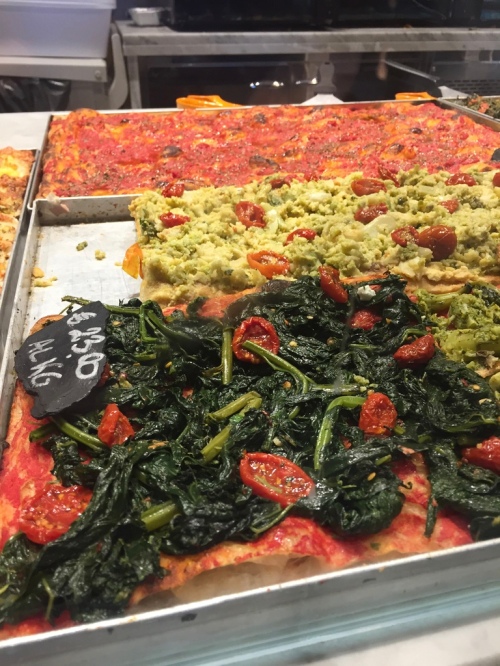
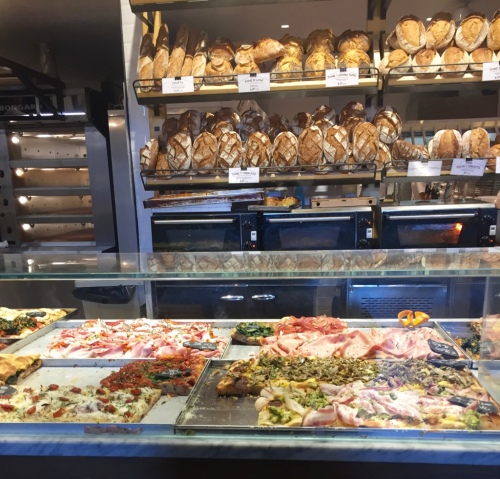
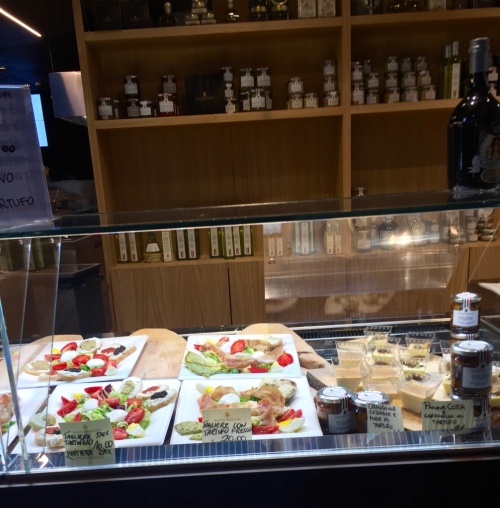
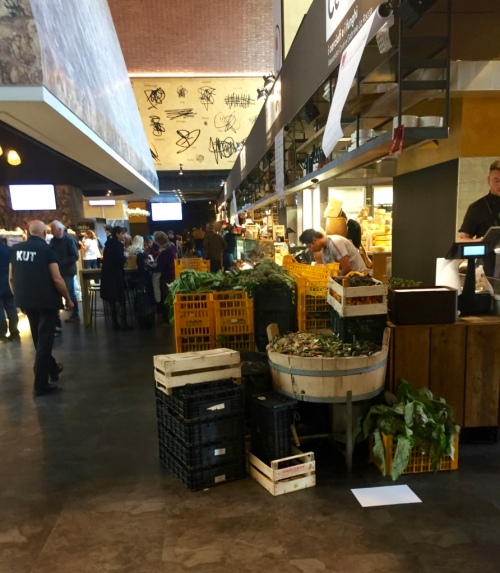
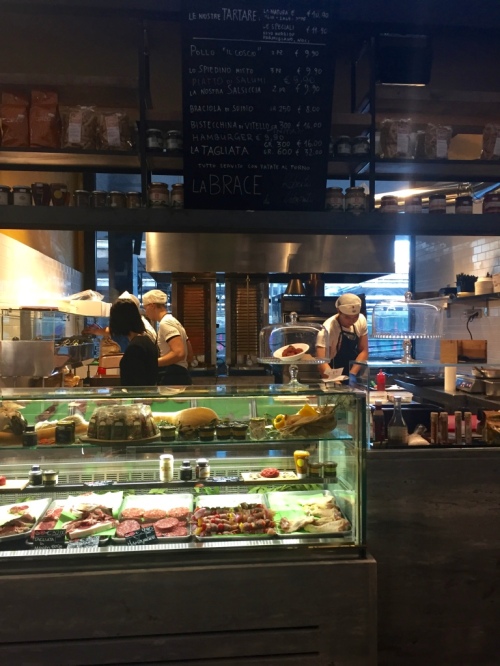
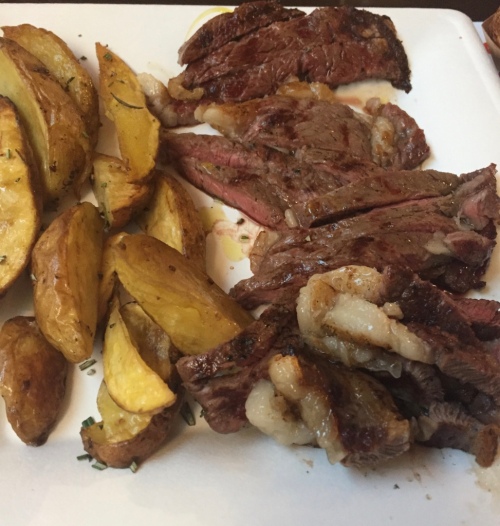

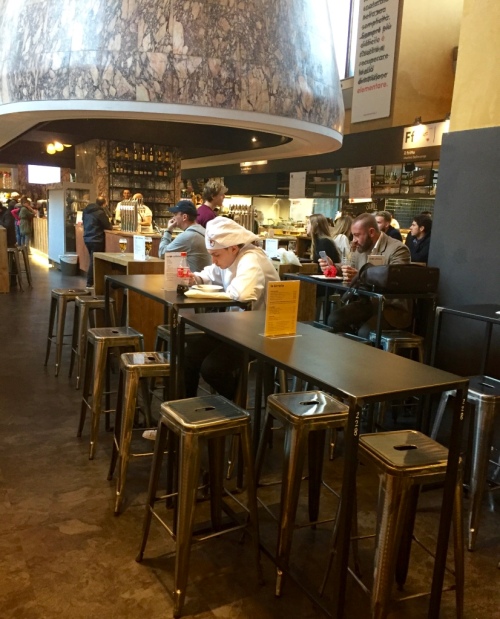
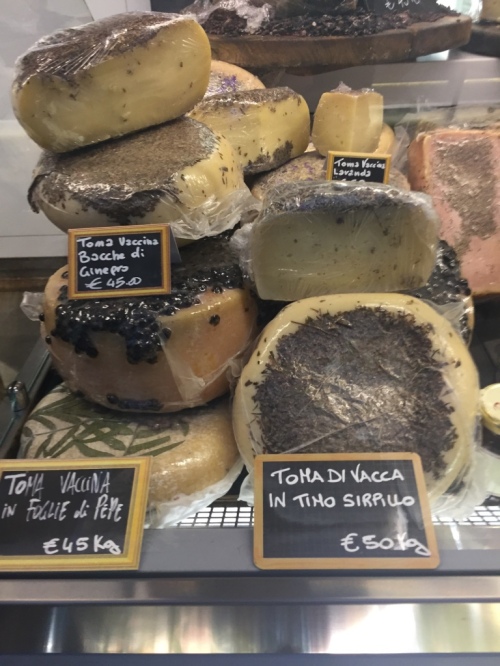
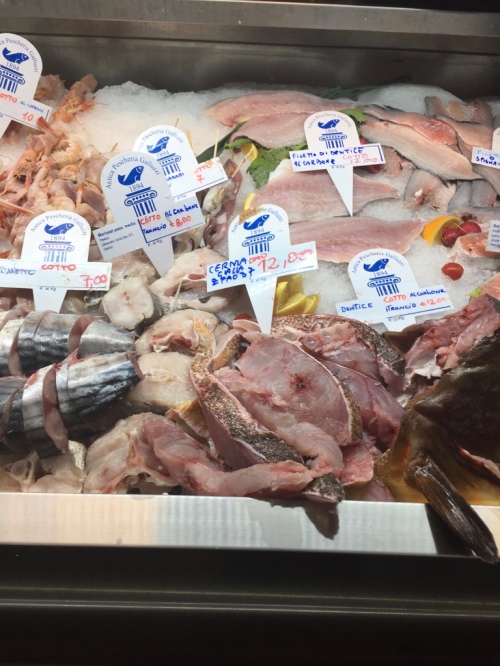
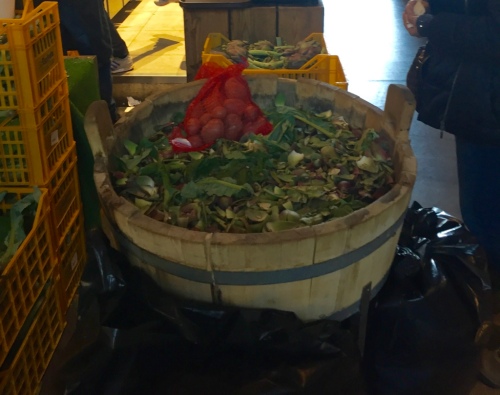






















































 Unfortunately I was on my own so I wasn’t able to try more than one main course (I draw the line at eating off the plates of total strangers). But I’ll be back. I’m excited about the coq au vin, the escargots and all that melted cheese. Not to mention the taste satin. Extra points for the homemade French dressing and pomegranate seeds in the tossed salad and the piping hot baguette.
Unfortunately I was on my own so I wasn’t able to try more than one main course (I draw the line at eating off the plates of total strangers). But I’ll be back. I’m excited about the coq au vin, the escargots and all that melted cheese. Not to mention the taste satin. Extra points for the homemade French dressing and pomegranate seeds in the tossed salad and the piping hot baguette.


